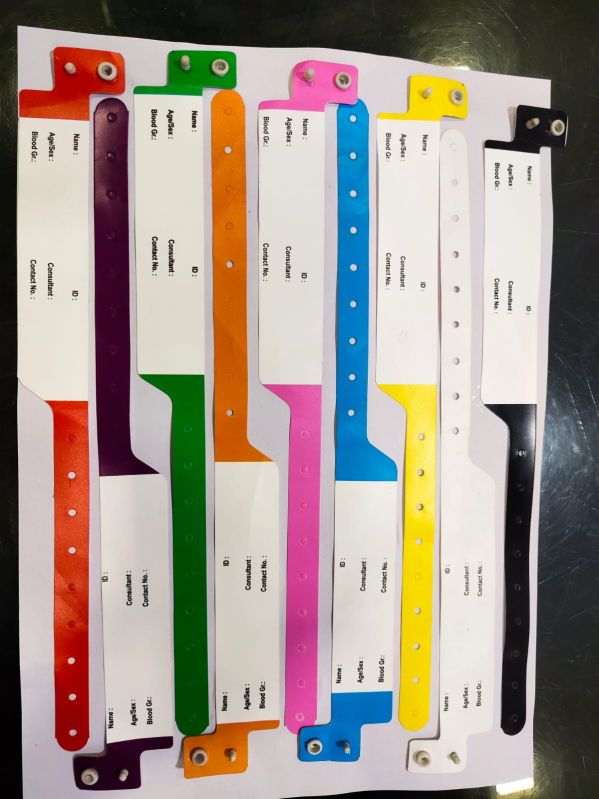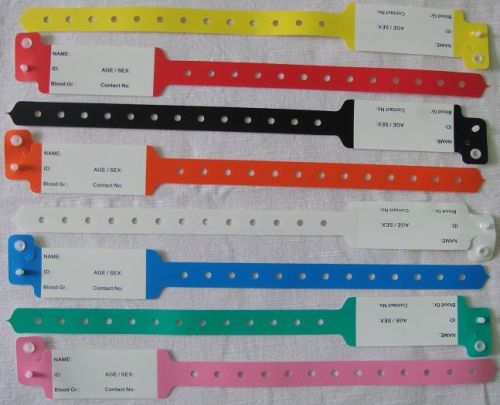Exploring the Numerous Kinds Of Patient Identification Band Utilized in Medical Facilities
In the detailed world of medical care, the essential duty of Patient Identification bands usually goes unnoticed. These bands, differing from simple paper wristbands to sophisticated RFID bands, create the backbone of Patient safety and security protocols, making sure accuracy in Patient Identification.
Comprehending the Relevance of Patient Identification Bands
While they may appear like plain devices, Patient Identification bands play a vital role in clinical centers. These bands serve as a vital tool for confirming Patient identification, stopping medical errors connected to misidentification. Patient Identification bands additionally help in enhancing administrative tasks, making certain precise record-keeping and invoicing.
Traditional Paper Wristbands: Their Use and Limitations
Standard paper wristbands have been a staple in Patient Identification across numerous clinical facilities. While their use is extensive, they harbor certain constraints that may impact their performance in Patient monitoring. This area will concentrate on the range of their application and the fundamental drawbacks linked with their use.
Paper Wristbands: Use Range
In the realm of Patient Identification, paper wristbands have long held a vital role. These bands are commonly utilized in outpatient setups, where the Patient's stay is short-term. The wristbands include vital info such as the Patient's name, date of birth, and an unique Identification number. This easy, yet reliable system, enables doctor to swiftly and accurately determine individuals, ensuring the right therapy is administered. Paper wristbands are likewise made use of in emergency circumstances, where quick Identification is vital. Their usage prolongs to events like blood contribution drives and mass vaccination programs, even more stressing their versatility. In spite of improvements in technology, the simple paper wristband remains a economical and reliable service for Patient Identification in different medical care circumstances.
Limitations of Paper Wristbands
Regardless of their prevalent use, paper wristbands are not without their downsides. Their physical durability is just one of the substantial restrictions. Exposure to water, sweat, or misuse can render them unreadable and even cause them to degenerate. Additionally, paper wristbands usually do not have the technical abilities of more modern choices, such as barcoding or RFID chips, restricting their performance to merely presenting created info. The failure to update or change the data on the wristband is another imperfection. In addition, if the info is handwritten, readability can be jeopardized, resulting in possible misidentification. Paper wristbands can cause pain or skin irritation to some people, particularly when put on for extended periods.
Barcoded Wristbands: Developments in Patient Identification
While Patient Identification has actually long been an important facet of medical care, the development of barcoded wristbands symbolizes a substantial jump ahead. These bands take advantage of the simplicity of barcoding innovation, allowing for Patient details to be promptly checked and accessed. They improve the speed and accuracy of Patient Identification, minimizing the danger of medical errors associated to misidentification.
Superhigh Frequency Identification (RFID) Bands: an Action In The Direction Of Futuristic Health Care
The development of Patient Identification bands has actually produced the emergence of Radio Frequency Identification (RFID) Bands (patient identification band). These ingenious devices present vital benefits for health care facilities, supplying a much more efficient and technologically progressed ways of Patient Identification. The application of RFID in healthcare is a substantial action towards an extra futuristic approach to Patient management and safety and security
Comprehending RFID Bands

RFID Bands: Trick Advantages
Largely, these bands improve Patient security by giving exact, instantaneous Identification, thus minimizing clinical mistakes. RFID bands can store a large amount of Patient data, consisting of clinical background and allergic reactions, making it possible for personalized care. Overall, RFID bands represent a significant development in Patient Identification innovation, benefiting both individuals and health care suppliers.
Applying RFID in Medical Care
These bands supply a seamless means to track and identify individuals, ensuring their security and improving effectiveness in therapy procedures. RFID bands decrease clinical errors by supplying accurate Patient Identification, which is essential in avoiding misdiagnosis or incorrect medication administration. Hence, the implementation of RFID bands is a considerable action towards enhancing Patient safety go to this website and health care distribution.

Color-Coded Wristbands: Aiding in Quick and Accurate Medical Diagnosis
In the dynamic atmosphere of a medical center, color-coded wristbands have actually become important tools for swift and accurate Identification of a client's clinical problem. These wristbands, put on by patients, bring particular colors that correspond to various medical conditions or standings. As an example, red might indicate allergy dangers, while yellow could symbolize a loss threat. This system is created to supply immediate visual hints to doctor, enhancing Patient security and care quality. In emergency scenarios, making use of these wristbands allows for fast decision-making. The effectiveness of color-coded wristbands depends on the uniformity of color interpretation across healthcare institutions, needing usual requirements for regular application.
Strategies for Efficient Application and Management of Patient ID Bands
Attaining optimal use of Patient Identification bands demands a well-structured technique for their implementation and management. Patient education is likewise essential; people have to understand the purpose of the bands and the demand for their continuous wear. It's essential to have a backup strategy in place, such as barcode scanning or biometrics, to guarantee that Patient Identification is never jeopardized.
Final thought
Patient Identification bands are critical in medical centers to make certain safety and security and precision. Reliable application and management of these bands can significantly reduce clinical mistakes, improve efficiency, and enhance general Patient treatment.
These bands, varying from basic paper wristbands to innovative RFID bands, develop the foundation of Patient security protocols, making sure precision in Patient Identification.The evolution of Patient Identification bands has brought concerning the introduction of Radio Regularity Identification (RFID) Bands. On the whole, RFID bands represent a significant improvement in visit their website Patient Identification modern technology, profiting both individuals and healthcare suppliers.
RFID bands lower medical errors by giving exact Patient Identification, which is vital in protecting against misdiagnosis or wrong medication administration. Patient education is additionally vital; patients need to understand the purpose of the bands and the need for their constant Visit Your URL wear.